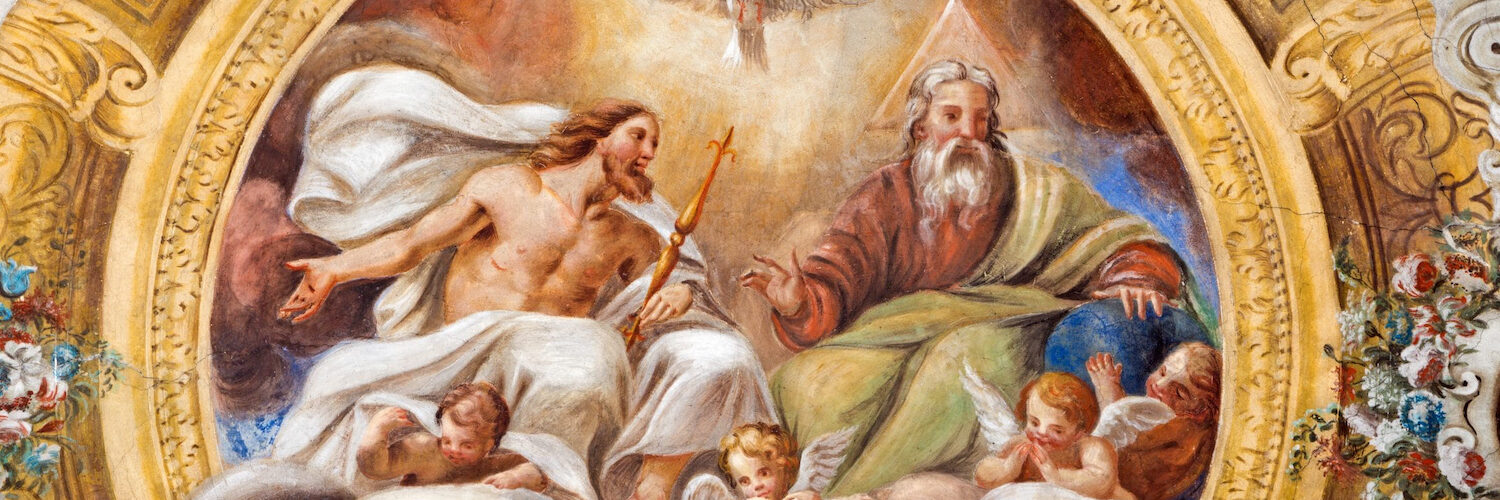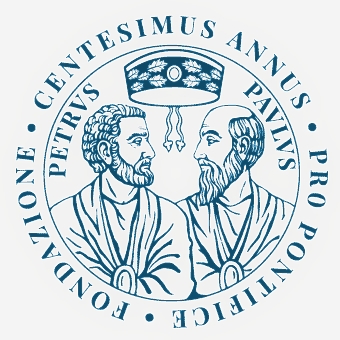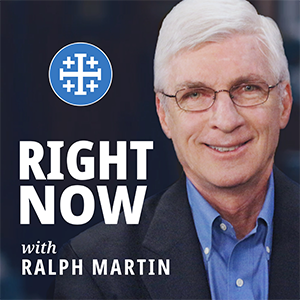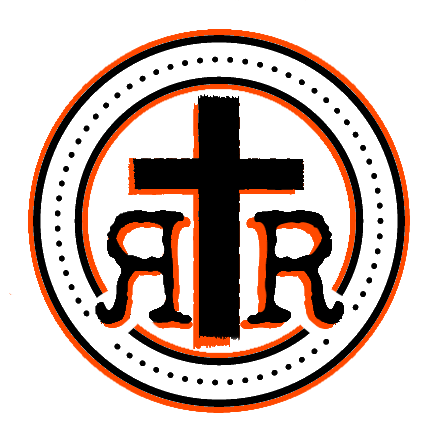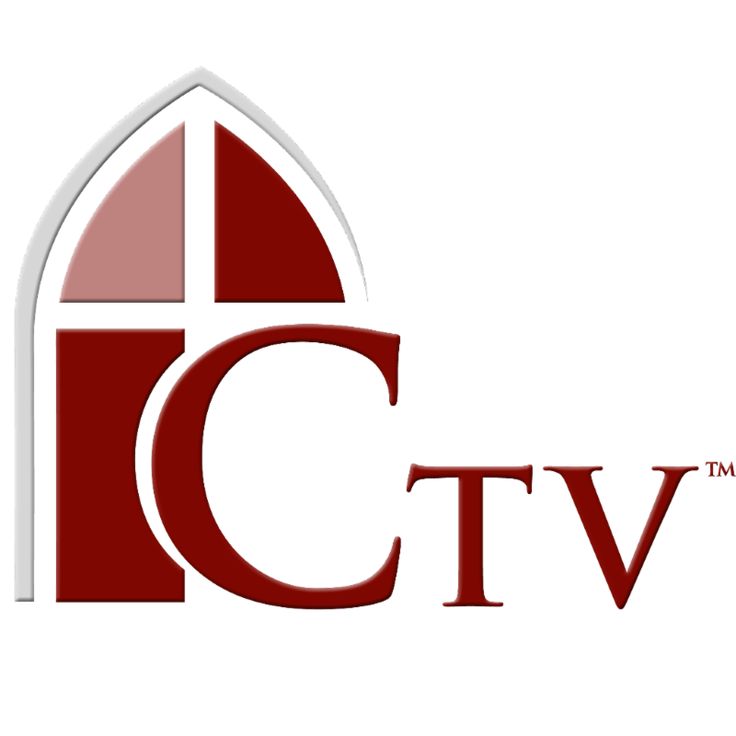Filioque, a single word in Latin, translated into English as “and from the Son ” was first added to the Nicene-Constantinopolitan Creed in the sixth century. It was inserted after the phrase “the Holy Spirit…who proceeds from the Father.” This word divided Europe from the time the Western Church first inserted it into the Creed in the sixth century. It was still controversial three hundred years later when Charlemagne, crowned Emperor of the revived Western Roman Empire in 800 A.D., insisted it be added to the Nicaean Creed without ecclesiastical approval. The word contributed to the decision of the Western Church to declare a schism with the Eastern Church partially over the East’s rejection of the addition to the creed. This word was still divisive in 1452 when in desperation delegates from Byzantium capitulated on the issue in an attempt to get the Pope to send troops to defend against the Islamic siege of Constantinople [1].
Central to the historic and current divide between Roman Catholicism (the Western or Latin Church) and Eastern Orthodoxy (the Eastern or Greek Church) is the doctrine of the procession of the Holy Spirit. Are the Holy Spirit’s hypostatic origin and subsistence eternally generated from both the Father and the Son or just the Father? The doctrinal rift on this matter is quite acute. There are few proof texts in the Holy Scriptures that address this question even peripherally and no text from the Bible addresses this directly. Yet partisans find this question to be of the utmost importance because it describes some of the inner workings of the economy of the Trinity. This issue was the primary cause of the schism between the Latin West and the Greek east nearly ten centuries ago. [2]
One Church, Two Languages
The placard on the cross had three inscriptions, the same phrase in three languages.[3] “Ἰησοῦς ὁ Ναζωραῖος ὁ βασιλεύς τῶν Ἰουδαίων” was the Greek inscription. The Latin phrase was “Iēsus Nazarēnus, Rēx Iūdaeōrum.” The third phrase was identical, but in Hebrew. “Yehoshua Hanatzri Vemelech Hayhoodem.”[4] In the first century these three languages were the languages of the universal Church. With the Roman destruction of Jerusalem in 70 A.D., the Hebrew character of the Church[5] waned, Greek and Latin waxed like rival brothers fighting for first position.[6] For the first three centuries of church history all educated theologians and professional Romans spoke both Greek and Roman fluently.[7] This was fitting because these two languages were brothers in the Indo-European language group.
When the first century of Christianity had passed, Greek theology and Latin theology began to diverge. The Latin Church had a practical approach, the Greek Church more imaginative. The influence of Roman Law influenced the Latin Church, while Greek philosophy had more of an influence in the east. In conceiving the Trinity, the Latin Church looked to the unity of the Godhead. The Greeks looked to the Threeness of the persons of the Trinity. For example, regarding the Crucifixion the Greeks thought of Christ as a victor, the Latins as Christ the victim. Latins thought of redemption, Greeks deification. These two theological approaches were not contradictory but complementary, but that is observed with the benefit of 1,900 years of historical insight. But to a contemporary, they appeared to be fracturing, if not yet theologically, culturally, and linguistically.[8]
During the Fourth Century, with the establishment of the newly built Imperial Capital in Constantinople, the Roman Church and the Greek Church began a period of mutual isolation. The first manifestation of this isolation was language. The Roman church forgot how to use the Greek language and the Greeks transitioned from using Latin as a court language to exclusively using Greek. This language barrier led to mutual misunderstandings. Greeks began to view Latins as foreigners. As Latin faded from Greek memory, the culture of the Eastern Empire slowly became more Byzantium and less Roman.
It is hard to tell exactly when the Romans and the Greeks began to have a challenging time understanding each other. Rome was a civilization that liberally borrowed from its conquered provinces. Rome nearly conquered Greece at the Battle of Corinth in 146 B.C., but it was another century until Greece became a permanent province of the Roman Empire. Greek and Roman culture so influenced each other that to a casual observer at the apex of the Ancient Roman Empire it became hard to tell where Rome started, and Greece ended. Rome borrowed the Greek culture as their own and the Greek language became a quasi-official language of the Empire. Latin, of course, was spoken everywhere in the Roman Empire, only being the second language in the East of the Empire where Greek predominated. Most educated persons in the Empire were Latin/Greek bilingual.
As the Apostles traveled around the Mediterranean Sea, they interacted within a closely sewn political and cultural entity. The Roman Empire embraced the many different tribes and nations of the Mediterranean. One ruler, Caesar, governed these diverse groups. As the legions and Proconsuls poured the concrete of the Empire, as the foundation settled and what dried was a broad Greco-Roman civilization. Greek and Latin were understood almost everywhere in the Empire. Many of the educated class were bilingual and spoke both Greek and Latin.
This Greco-Roman foundation was of great utility to the early Church in its missionary activities. The political economy of the Empire, while it sometimes persecuted the Church, directly aided the propagation of the Gospel. But as the Empire grew into middle age, the unity of the Mediterranean world dissipated. As the Empire began to stagnate, this political unity was the first casualty. By the end of the third Century, to stem economic stagnation, the Empire was divided into two parts, an Eastern Empire, and a Western Empire, each governed under its own Emperor. Constantine shifted tremendous resources to the Eastern Empire by building a “New Rome” at the ancient site of the city of Byzantium. Renamed Constantinople, this new city was to become the new capital of the Eastern Roman Empire.
Justinian was the last Byzantine Emperor that considered himself a Latin. His conquests were impressive but were soon abandoned. With the Avar and Slavic invasions of the Balkans, the Eastern Empire soon took stock of its long-term survival and concentrated its military resources in the East where Islam was threating the survival of European Civilization. Illyricum, which once served as a land bridge between east and west became a bulwark against the Islamic threat.[9]
In addition to the political separation of East and West, an Ecclesiastical separation was growing between the two halves of the Christian Church. Once united under one Imperial banner, the Orthodox Church and Roman Catholic Church were no longer familiar to each other. Since the age of the early Church, Greeks, and Latins each approached the Gospel of Jesus Christ in distinctive approaches. Latins tended to be more practical, Greeks attracted to the mysteries of the faith. The Latin approach was heavily influenced by Roman Law. The Greeks approached theology in the context of the mystery of the Holy Liturgy. Approaching the doctrine of the Trinity, Latins emphasized unity, Greeks looked to the three persons. When thinking of salvation, Latins thought of redemption and Greeks deification. Plato and Aristotle were studied in the East, in the West it was Cicero and Seneca.[10] These approaches were not contradictory but complementary. But with the passage of time, the collapse of the Western Empire, the Rise of Byzantium, division of distance, language, politics, and culture, each side tended to follow its own approach without input from the other half of Christianity. The result being that the two halves of the Christianity were pushed into extreme positions.[11]
As these linguistic and cultural factors isolated the East from the West other factors in ecclesiastical practice occurred. The use of unleavened bread in the Eucharist and the growing requirement for Priestly celibacy in the West. The lack of communication increased tensions along these fault lines over time. Eventually these Fault lines that would shatter Europe and Christendom.[12]
As the southern shores of Mare Nostrum passed under Islamic control, the cultural divide between East and West became much starker. While culturally the East and West remained in contact, communication became far more sporadic. As time passed, the Greek language fell into disuse in the West and Latin was no longer spoken in the East. Latin became Italian. The koine Greek dialect began to evolve into Early Modern Greek, though the koine was still used in the Greek Church liturgy until 1453 as Latin is still used in some liturgies today.
St. Augustine and the Triune God
Little needs to be said here to introduce Augustine other than to state that his theological work is the basis for the triadology of the greater part of Latin or Catholic theologians, past and present.[13] Saint Augustine borrowed from the Neo-Platonists to make sense of the theological pronouncement that the Holy Spirit “who proceedeth from the Father” was also the “Spirit of the Son.”[14] Augustine’s model for the trinity was like the Platonic conception of the human mind. The triumvirate of memory, intelligence and will coexisted of the same substance just as the Father, Son, and Holy Spirit exist in the one substance of God.
Each member of the Trinity is of the same substance, but each member serves a different role and purpose. The Father was the first cause, but not creator, of the Trinity, the Son was God incarnate and the Word of God, the creator of reality and the universe. The Holy Spirit was the reciprocal love of the Father and Son and their shared gift to the world. Augustine affirmed the scriptures demonstrated the Holy Spirit was not just of the Father’s alone, nor of the Son’s alone, but was the Spirit of them both. Since the Holy Spirit was the Spirit of them both, it seemed logical that the Holy Spirit must proceed from them both.[15]
Augustine was aware of the Eastern Orthodox precept that the Father was the Monarch of the Trinty. In affirming this he made pains to acknowledge that this instruction did not contradict the unique role that the Father had as the source of divinity. Still, the Father is the only eternal entity within the Godhead from which the Son is begotten and from which the Holy Spirit primarily proceeds. He clarifies, “I added ‘principally’ because we have found that the Holy Spirit also proceeds from the Son…The Father begot the Son. Their common gift would proceed to the Sonas well so the Holy Spirit would be the Spirit of them both.”[16] But Augustine continued, “the ability to bring forth the Spirit is not something inherently belonging to the Son, but rather is a gift by the Father. If the Son has everything that he has from the Father, he clearly has it from the Father that the Holy Spirit should proceed from him. ..The Son is begotten of the Father and the Holy Spirit proceeds from the Father principally, and by the Father’s wholly timeless gift from both of them jointly.”[17]This position is surprisingly not much different than the Eastern Theology on the topic. So what is the problem?[18]
Augustine felt compelled to speak to a charge that in positing the Spirit’s procession from both the Father and Son, he was acknowledging two paradoxical tenets within the godhead. This charge was false, he maintained, because the Holy Spirit did not receive its proceeding from the Father from anywhere else other than the Father. “We must confess that the Father and the Son are the origin of the Holy Spirit; not two origins, but just as Father and Son are one God and with reference to creation one creator and one lord, so with reference to the Holy Spirit, they are one origin; but with reference to creation Father and Son, and Holy Spirit are one origin, just as they are one creator and one Lord.”[19]
To summarize, Augustine lays the foundation for the filioque but with a loophole that renders the doctrine’s importance vastly inflated to all but dogmatic partisans. Augustine teaches that the Father is the Fount of the Trinity, similar to the monarch in Orthodox theology. The Son is begotten of the Father.
Saint Photios the Great and the “Father as the only cause”
Photios was one of the greatest writers of the Ninth Century and an intellectual near the caliber of Augustine of Hippo. Photios, a layperson, in a flurry of political and ecclesiastical intrigue was chosen by the Eastern Church to replace Ignatius as Patriarch of Constantinople. He would soon be known as Saint Photios the Great.
While Photios was a man of great learning, his knowledge of Latin was dismal. Because of his lack of knowledge of Augustine’s writings on the Trinity, his attacks on the Filioque clause failed to refute the Latins’ patristic evidence. Latins saw this as an attack on the result of their doctrine, not on the logic of the matter.[20] A summary of the Eastern doctrine of the procession outlines Photios’ thinking:
To the East, which is rooted in Origen’s and the Cappadocian fathers’ theologies, this Western view of the Trinity implied a subordinationism of the Spirit. In fact, it seemed to Easterners to depersonalize the Holy Spirit. Their own tradition of trinitarian thinking was to emphasize the monarchy of the Father so that both Son and Spirit find their source, principle and cause eternally in the Father. The Western idea of the Spirit proceeding from the Son seemed to them to imply that the Spirit finds his source, principle, and cause in him as much as in the Father. This detracts from the monarchy of the Father and implies that the Spirit is a “son” of the Son of God even as the Son of God is the Son of the Father. A complete distortion of the traditional order of the triune community would follow from that. To Easterners it is insulting to both the Father and the Spirit and confuses the Son with the Father.[21]
Photios thought that if the Father is the one source of the Son and the Spirit and the Son is another source of the spirit, God is not Triune but a dual divinity. He also held that if the Father is the principle and source, not because of the nature of the divinity, but because of the property of his own hypostasis, the Son cannot be a principle and source. Also, the procession of the Spirit from the Son makes the Son a father of the Spirit’s being, thus the Holy Spirit could be called a grandson of the Father.[22]
But was there really such a divide between the theology of Augustine and that of Photios? Might not Augustine’s font be the same idea as Photios’ Monarch? It is clear that Augustine had a minor change of heart when he revised his work to clarify that the procession of the Holy Spirit from the Father to the Son was a gift and not something natural. It is at this point that our finite minds begin to fail us. If God is immutable, does it matter? If God gave the gift to the Son, it was a gift in eternity and not a temporal gift. Is there a distinction between an eternal gift and a natural function? Is it a distinction without a difference? Space constraints make pondering or reconciling this apparent paradox beyond the scope of this work. Still it is important to note Augustine made pains to avoid the dual divinity problem that Photios envisioned. This is a seemingly complex problem that may be one of those subjects that we will have to accept on faith until our knowledge is perfected or a theologian discovers a rational answer. Still it is my conclusion that the distinction between Photios’ and Augustine’s understanding is one of perspective and not one of substantive distinction.
The 1054 Schism
The last event that further weakened the fragile relationship between Rome and Constantinople had its origins in a military dispute in Sicily. Sicily was a Greek colony during the Greek Classical Period of the Third Century BC. After the Fall of Rome in 476, it remained a colony of the Byzantine Empire, and most of the churches on the island followed the Greek liturgy. The island had been nearly lost to the Arab Muslims when the Normans, expanding throughout Europe, conquered the island in the 1040s to protect the island from Islam. The Catholic Normans replaced the Eastern bishops with Latins and changed the liturgy to Roman Catholic. When the Patriarch of Constantinople, Michael Cerularius, received the news he promptly found excuses (dealing with such minor customs such as using unleavened bread for the Eucharist and that old standby, objections over a celibate clergy) to shutter the Latin churches in Constantinople. To work things out, Pope Leo IX sent perhaps the most undiplomatic person of that time he could send, the ambassador Cardinal Humbert to Constantinople where the two had a raging argument over unleavened bread.[23]
While Humbert was in Constantinople Pope Leo died which, under Canon Law, revoked Humbert’s mission. When informed of this news, Humbert ignored it and went rogue. In what may have been caused by tampered communications (the Papal seals were broken), Cerularius refused further meetings with Humbert. Finally, in what was an illegal action on his part, Humbert and his party entered the Cathedral of Saint Sophia during Mass and in the dead Pope’s name, threw an order of excommunication down on the altar and in a huff left for Rome.[24] The excommunication was illegal, but Constantinople promptly issued its own excommunication of the Roman Church, cementing the schism.
The 1054 schism of the Roman Catholic and Eastern Orthodox Churches was not a divorce between the two halves of Christendom. It was a sign that relations between the East and West had reached a new low. At the time, the schism was not seen as significant. The churches had been in schism before, and both sides worked out their issues within a decade or two. But this time the schism lasted for over one-thousand years. Talks between the two sides continued but the Crusades intervened. Then Rome usurped the Eastern Church when Latins gained control of the Byzantine Empire in 1204. The Empire was partitioned, and the East was left with a small shell of Justinian’s Empire. The filioque was blamed, but as an afterthought.
Epilogue
For Byzantium, the end came when Constantinople fell to the Ottoman Empire in 1454. The last gasp of the Greek Empire came when the Turks massacred the praying worshippers in the Basilica of Saint Sophia. These last martyrs were considered themselves Ρωμαίους or Romani as well as Christians to the end. By Canon law they went straight into the presence of the Lord Jesus Christ. Saint Sophia sits in Constantinople, stripped of its icons and relics, the ornate mosaics plastered over, waiting for the Second Coming.
Bibliography:
Alfeyev, Hilarion, MT. Orthodox Christianity: The History and Canonical Structure of the Orthodox Church. Yonkers, NY: St. Vladimir’s Seminary Press, 2011.
Bauer, Susan Wise. The History of the Medieval World: From the Conversion of Constantine to the First Crusade. New York, NY: Norton, 2010.
Bennett, William J. Tried by Fire: The Story of Christianity’s First Thousand Years. Nashville, TN: Nelson Books, an Imprint of Thomas Nelson, 2016.
González, Justo L. The Story of Christianity. Vol. 1. 2 vols. New York, NY: HarperOne/HarperCollins, 2010.
Hitchcock, James. History of the Catholic Church: From the Apostolic Age to the Third Millennium. San Francisco, CA: Ignatius Press, 2012.
Johnson, Luke T. “The History of Christianity From the Disciples to the Dawn of the Reformation.” Lecture, Chapter 24: Eastern Orthodoxy Holy Tradition, The Great Courses.
Johnson, Paul, History of Christianity: New York: Touchstone, 1995.
Laux, John Joseph. Church History; a Complete History of the Catholic Church to the Present Day. New York: Benziger Bros., 1945.
Louth, Andrew. Greek East and Latin West: The Church, AD 681-1071. Crestwood, NY: St. Vladimirs Seminary Press, 2007.
MacCulloch, Diarmaid, Christianity: The First Three Thousand Years. New York: Penguin Books, 2011.
Norwich, John Julius. A Short History of Byzantium. New York, NY: Vintage, 1999.
O’Neill, John. The Fisherman’s Tomb: The True Story of the Vatican’s Secret Search. Huntington, IN: Our Sunday Visitor Publishing Division, 2018.
Olson, Roger E. The Story of Christian Theology: Twenty Centuries of Tradition & Reform. Downers Grove, Ill: InterVarsity Press, 1999.
Pusey, E. B. On the Clause “and the Son,” in Regard to the Eastern Church and the Bonn Conference: A Letter to H.P. Liddon. Oxford: London, 1876.
Saint Photios. The Mystagogy of the Holy Spirit. Translated by Joseph P. Farrell. Brookline, MA: Holy Cross Orthodox Press, 1987.
Shelley, Bruce L. Church History in Plain Language, Fourth Edition. Nashville, TN: Thomas Nelson, 2013.
Shmeman, Aleksandr. The Historical Road of Eastern Orthodoxy. Crestwood, NY: Saint Vladimir Seminary Press, 2003.
Siecienski, A. Edward. The Papacy and the Orthodox: Sources and History of a Debate. New York, NY: Oxford University Press, 2017.
Siecienski, A. Edward. The Filioque: History of a Doctrinal Controversy. New York: Oxford University Press, 2013.
Laurentius Valla and Glen W Bowersock, On the Donation of Constantine: Cambridge, Mass.: Harvard University Press, 2008.
Ware, Timothy. The Orthodox Church. London: Penguin Books, 1997.
[1] A siege that ended the last vestige of the Ancient Roman Empire.
[2] Ybarra, Erick. The Filioque: Revisiting the Doctrinal Debate Between Catholics and Orthodox, 1–2. Seattle, WA: Amazon, 2022.
[3] The text was identical in three languages: “Jesus of Nazareth, King of the Jews.”
[4] Maier, Paul L. “The Inscription on the Cross of Jesus of Nazareth.” Hermes, B.D., 124, no. 1 (1996): pp. 58–75.
[5] MacCulloch, Diarmaid. Christianity: The First Three Thousand Years, 135. New York: Penguin Books, 2011.
[6] Noll, Mark A. “The Church Pushed Out on Its Own.” Essay. In Turning Points: Decisive Moments in the History of Christianity, 28. Grand Rapids, MI: Baker Academic, 2012.
[7] Johnson, Luke T. “The History of Christianity From the Disciples to the Dawn of the Reformation.” Lecture, Chapter 24: Eastern Orthodoxy Holy Tradition, The Great Courses.
[8] Ware, Timothy. The Orthodox Church, 66–67. London: Penguin, 1999.
[9] Johnson, Ibid; Heather, Peter. Fall of the Roman Empire: A New History of Rome and the Barbarians. Cary: (Oxford University Press, USA, 2014) pp. 431-444.
[10] Alfeyev, Hilarion, MT. Orthodox Christianity: The History and Canonical Structure of the Orthodox Church. Yonkers, NY: (St. Vladimir’s Seminary Press, 2011), Kindle Location 2009.
[11] Ware, Timothy. The Orthodox Church. London: (Penguin Books, 1997) p. 46.
[12] Ware, p. 46.
[13] Stewart, Melville Y. The Trinity: East/West Dialogue. Dordrecht: Springer, 2011.
[14] Siecienski, 59-60.
[15] 60.
[16] Augustine of Hippo, The Trinity 7.1.2, paraphrase
[17] 15.26.47.
[18] To be addressed in Section V.
[19] Siecienski, 59-57, quoting Augustine.
[20] Supra.
[21] Olson, p. 309.
[22] Adopted from Siecienski, The Filioque, p.101.
[23] Bennett, p. 387.
[24] Bennett, p. 388; Bauer, Susan Wise. The History of the Medieval World: From the Conversion of Constantine to the First Crusade. New York, NY: (Norton, 2010) Kindle Locations 9960-10012; Laux, pp. 295-296; Shelley p. 159-161.


